
Background information
Visit to the largest Japanese garden in Europe: Sabine Rusch reveals the secret of garden art
by Darina Schweizer

Feey plants are now available on Galaxus. I visited the company, put their plant doctors to the test and found out why the greenery from Uzwil lives longer than what you’ll find in DIY and interiors stores.
Empty refrigerated counters, abandoned shelves, old-fashioned strip lighting. This and the faded Migros logo are all that’s left of the former supermarket in central Uzwil. It stood empty for three years, but now plants are reclaiming the abandoned space. Well, Feey is. Switzerland’s best-known online plant shop put down roots here five months ago. Thousands of plants are now sprouting and climbing where customers came and went until 2021.
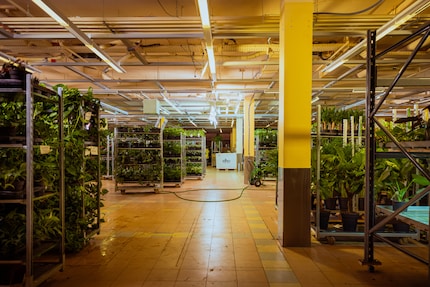
Now, it’s my turn to step through the sliding door of the former entrance. And I’ve not come alone – I’ve brought along some of my work colleagues’ sickly plants. This comes as no surprise to Jil Claire Schulz, Head of Communications at Feey: «Many people are overwhelmed with plant care. If they buy their plants at DIY stores or interiors shops, they don’t get enough help and it’s too much. After a few months, the plants die. That’s exactly what we want to stop.»
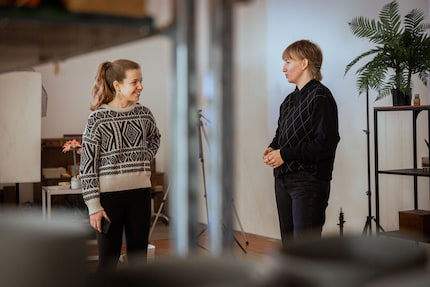
To show me how this is done, Jil Claire leads me through numerous aisles of plants. Each shelf contains specimens of the same species and they’re watered and maintained by plant experts as needed. «This is a crucial difference to DIY stores. We can and want to take the time to care for each plant according to its individual needs,» says Jil Claire.
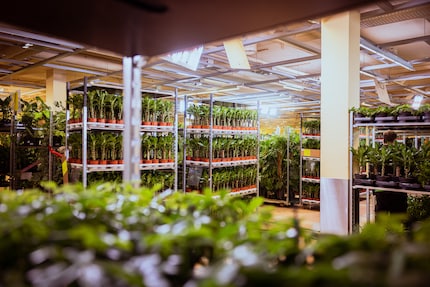
Jil Claire stops at a large table. One of the 35 permanent employees is currently pulling a yucca out of a growing pot. The plant comes from the Netherlands, like the majority of Feey’s plants – and its competitors’. What makes Feey different is that the team regularly visits the site themselves and selects the right nursery for each type of plant. They also check the quality of each individual plant.
When plants arrive in Uzwil, employees’ first job is to check the roots. If they’re too long, they cut them. If they’re too short and weak, they reject the plant. A lot of plants may look the same at first glance, but there are big differences in quality. According to Jil Claire, the secret lies in the roots. «Only plants that have been given enough time to take root and not been subject to ‹doping› will grow well in the long term,» she explains. Feey repots all plants by hand with its own soil, not the superfine coconut substrate that’s widely used.
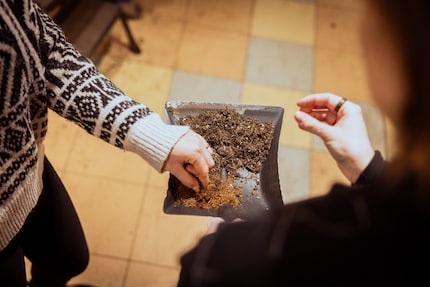
And this soil is something special. Jil Claire takes a handful from the trough. Made of bark humus, wood fibres, rocks and nutrient-rich compost, it’s crumbly and uneven. And with good reason: the heterogeneous composition allows oxygen and water to pass through better. This means that plants are less likely to be overwatered – one of the most common mistakes made by «plant parents».
For Jil Claire, this is hardly surprising. «With plants from a DIY store, you’re left to choose and care for them yourself. Most people don’t know which species fits where in their home and how to look after the plants. The care instructions on labels are often confusing,» says Jil Claire. Feey offers support in several ways:
The plant doctors receive dozens of enquiries every day. Today, I’ve added nine more to the list. I unpack my colleagues’ ailing plants and place them on the treatment table. The plant doctors put their heads together.
Debora has six patients. Her goeppertia warscewiczii is curling up despite regular misting. The large flamingo flower keeps getting brown leaves. And then there are the leaves of the luscious Swiss cheese plant, which are turning just as yellow as those of the peace lily (spathiphyllum cochlearispathum). Debora recently repotted the latter, but the wrapped-up leaves won’t unfurl. The tropic snow (dieffenbachia) has also been recently repotted. But its roots won’t grow and dry, brown spots are forming on the new shoots.
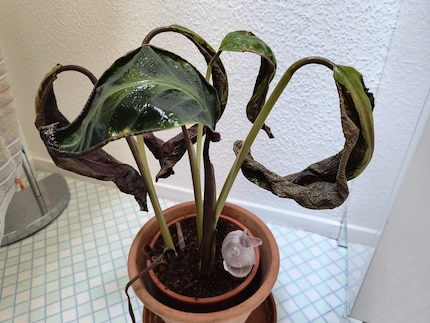
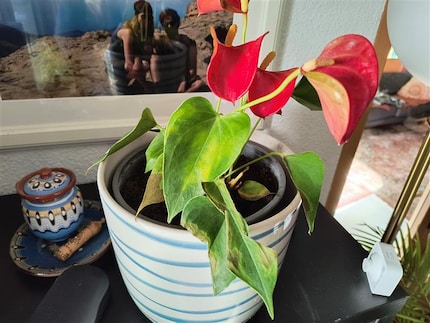
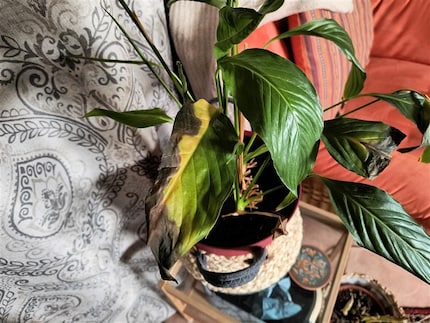
What do the professionals think? Jil Claire says there can be many causes of yellow leaves. Along with young leaves that are already brown, it’s worth taking a look at the roots. «The soil seems relatively dense and dusty. It’s probably a homogeneous mass without any stones or anything like that. So, pull the plant out of the inner pot and take a look at what’s going on in there. Beige, firm roots can stay, black, mushy roots can be cut off. And then it’s best to plant them in permeable soil.»
According to Jil Claire, it’s also worth taking a look at the leaves, especially the underside. If the leaves have yellow speckles, they could have spider mites – tiny pests that are easy to mistake for dust. «They make fine webs, which is the easiest way to identify them. And a purely cosmetic tip: you can remove any leaves that are completely brown. Unfortunately, they won’t turn green again.»
Davide has two patients in a really bad state. His monstera and unidentifiable palm are nothing more than dry stems. Do they still have any chance of survival?
The plant doctors say no. Often, very damaged plants can still be saved by digging them out of the ground and propagating the remains. «But if all the shoots are brown and there are no green spots left, then it’s time to carefully put the plants in your green waste bin,» explains Jil Claire.
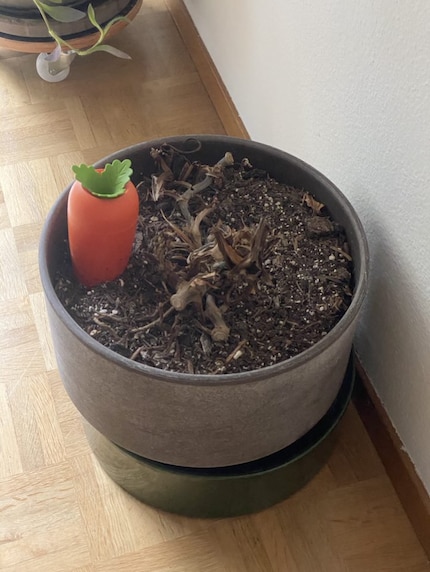
Davide’s Zanzibar gem’s also unhappy at the moment. The once bushy plant is losing more and more leaves and its dark green colour. The professionals have two tips for this: more light and less water. Zanzibar gems store a lot of water in their thick roots, so they don’t need much attention. According to Jil Claire, the best thing to do here is pull out any mushy shoots and then restrict the amount of water they get and place them somewhere the leaves can see the blue sky.
Again, it’s becoming clear that unusual exotic plants are beautiful to look at, but often too demanding for hobbyists – and sometimes even professionals. «There are more and more new species that look fantastic at first glance. We test the plants and keep them for a while. There are always some that just don’t thrive. It seems like they were bred to die. That’s why we don’t include them in our range,» says Jil Claire.
But there have also been successes. To make it easier to care for rarities and completely normal plants alike, the team’s currently working on its own indoor farm in St. Gallen. The online plant shop already sources some of its plants from there – and the number will gradually increase via hydroponics.
Jil Claire points to a frame with a water basin which houses philodendrons and calatheas in pots with brown balls. «Expanded clay gives the roots support and, in combination with a water level indicator, makes plant care a breeze. One look at the indicator and it’s clear whether you need to reach for the watering can,» says Jil Claire. This significantly increases the chances of survival.
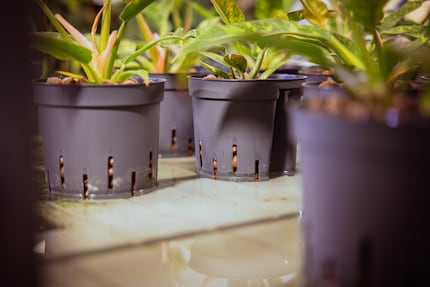
For decades, the former Migros in Uzwil was a hive of activity. Like an ancient tree, it survived years of rain and drought. Jil Claire hopes that Feey plants will also have a long life ahead of them and that their pots won’t become empty like the building. «Houseplants aren’t bouquets that wither. They’re not dead products. They should live. We do everything we can to make that happen.»

I love anything with four legs or roots - especially my shelter cats Jasper and Joy and my collection of succulents. My favourite things to do are stalking around with police dogs and cat coiffeurs on reportages or letting sensitive stories flourish in garden brockis and Japanese gardens.
Interesting facts about products, behind-the-scenes looks at manufacturers and deep-dives on interesting people.
Show all
Background information
by Darina Schweizer

Background information
by Darina Schweizer

Background information
by Darina Schweizer